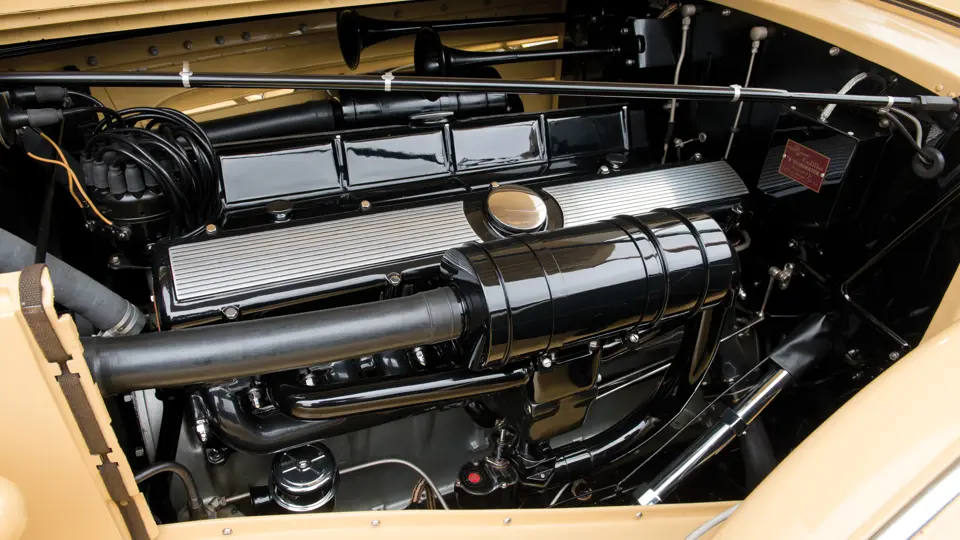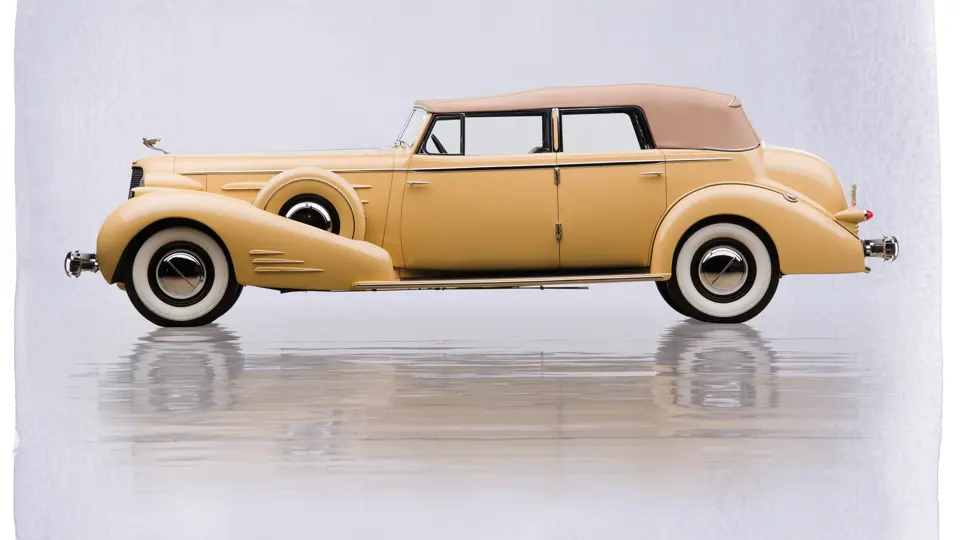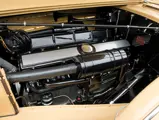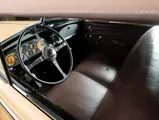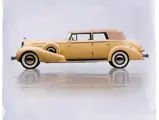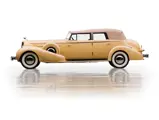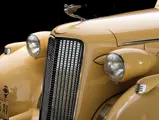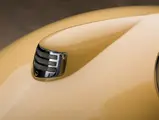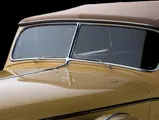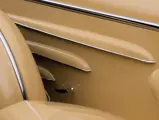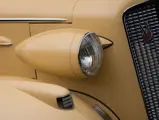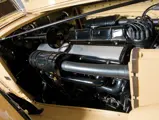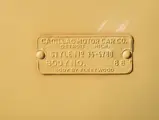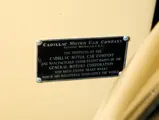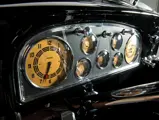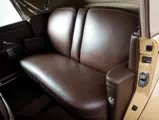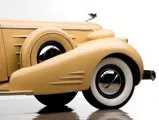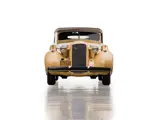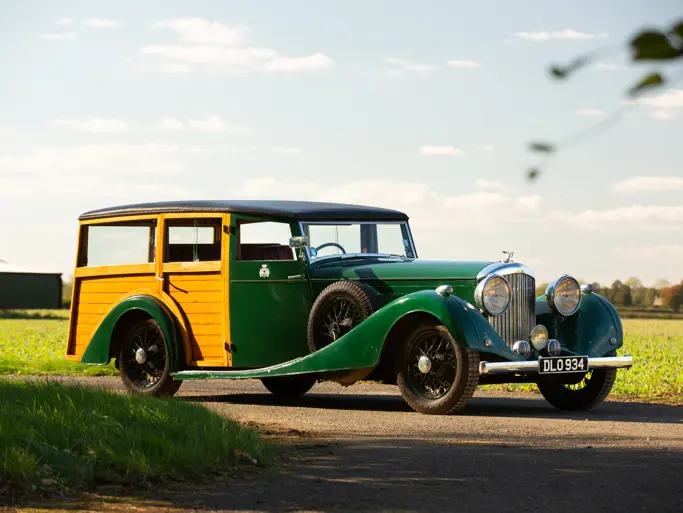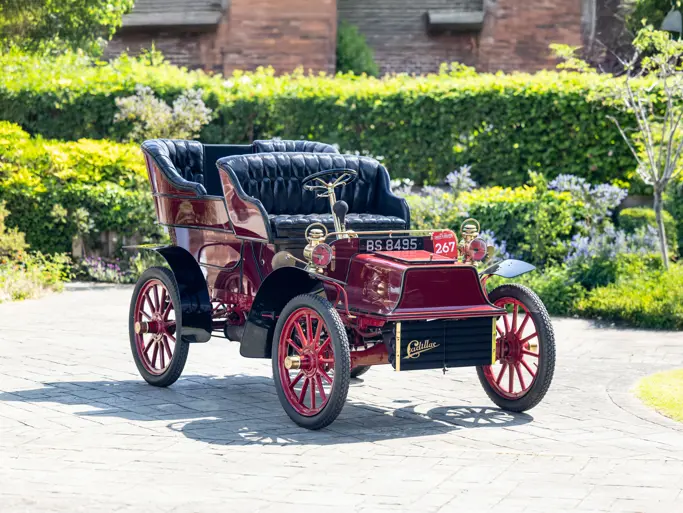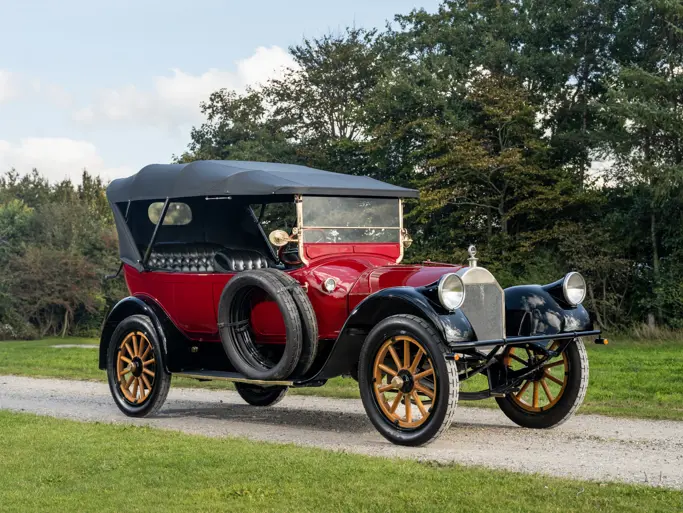
1935 Cadillac V-16 Imperial Convertible Sedan by Fleetwood
{{lr.item.text}}
$605,000 USD | Sold
{{bidding.lot.reserveStatusFormatted}}
- One of only six built; originally delivered to the Lilly family
- Formerly owned by Richard Gold and Dr. Barbara Atwood
- Award-winning restoration by a marque specialist
- Documented by its original build sheet
- A “Sixteen” of tremendous presence
Series 452D. Body Style 5880. 185 bhp, 452 cu. in. overhead-valve V-16 engine, three-speed selective synchromesh manual transmission, independent front suspension with coil springs, three-quarter floating rear axle with semi-elliptical leaf springs, and four-wheel mechanical drum brakes. Wheelbase: 154 in.
By 1935, the era of the Cadillac V-16 was rolling towards an end. The car still offered matchless engineering, which operated under the same durable, smooth, and beautifully built overhead-valve engine with hydraulic valve lifters that had been created by Owen Nacker for the 1930 season. Its styling had been updated to follow other Cadillacs over the years, with increasingly more full-bodied and streamlined lines, and in turn, it grew even longer, with the car finally measuring over 20 feet from stem to stern. There may have been more modern luxury cars in the offering by 1935, but absolutely none had the V-16’s presence and personality. It was a grand car for the grand person who could still afford one, which was a description that was applying to fewer and fewer people as the Great Depression wore on.
Cadillac built only fifty V-16s in 1935, and survivors are few and far between, probably numbering fewer than a dozen altogether.
The car offered here is believed to be one of six Imperial Convertible Sedans built on the V-16 chassis in 1935. Its original build sheet clearly identifies body number 86, the number which can still be found on the original tag on the firewall today, and body style number 5880, although the build sheet misidentifies it as a “Conv. Coupe.” One wonders about the mindset of the employee typing Cadillac’s build sheets, as the same sheet also identifies this car’s engine number as 5100143, while the engine is clearly stamped 5100043, which is an error on either the part of the stamper or the build sheet creator.
Interestingly, the build sheet records the car as having been delivered through Hoosier Cadillac Company, of Indianapolis, with “Tag – E.B. Lilly.” The “Tag,” in Cadillac parlance of this era, meant to hold the car for a special customer, in this case for someone who was likely a member of Indianapolis’s prominent Eli Lilly pharmaceutical family.
In the November/December 1963 issue of The Self-Starter, page 13, further ownership history of the car is detailed, beginning with a U.S. Army captain who sold it to a St. Paul, Minnesota, used car dealer in the 1950s. It was sold by the dealer to the late Dexter Buell, next passing to John Morgan, then to a Mrs. Norval, and finally, in 1957, to Alden O. Johnson, of Minneapolis. It was still recorded with Mr. Johnson in 1963, and in a roster of extant V-16s that had been prepared by Stan Squires in the early 1970s, it was said to be “disassembled, with no running boards, but otherwise [in] good condition.”
According to a long-time Classic Car Club of America member and past president, the late Richard Gold, he found the Cadillac courtesy of a mailman whom he had paid to peek into garages located in the Twin Cities area, where Gold also lived. At the time of its discovery, it was, according to restorer Steve Babinsky, “an amazing original car, with excellent and untouched original paint, chrome, and upholstery.” Photographs on file show what appears to be this car in the ownership of Thomas Barrett, and it is still in its original condition, as this was prior to its acquisition in the mid-1980s by one of the most famous collectors, the late Dr. Barbara Atwood.
As Dr. Atwood was never one to leave a stone unturned in her prized collection, she elected to have Mr. Babinsky restore the superb original car; this was a job that he completed with no little amount of trepidation, stating later that “she should never have restored it.” The paint was precisely matched to the correct factory color of Diana Cream, and the interior was upholstered in brown leather, which was specially ordered to match the factory material, as was the brown carpeting.
As an Imperial model, the car has a limousine-style interior, with a division window twixt the driver and passengers. The fully restored instrument panel holds an authentic Master radio, as listed on the build sheet, with its power being supplied by a Cadillac “B” Eliminator that is located under the hood.
As the car had been regularly shown but seldom driven in the quarter-century that it spent with Dr. Atwood, it required thorough servicing and detailing upon its acquisition by the Andrews Collection. Today, its paint is still shining, and overall, it is in excellent condition, with only a few minor blemishes from age and use. The interior is lightly stretched on the driver’s seat but otherwise pristine. Overall, the Cadillac features a fine older restoration, one that would require only further detailing for continued show appearances. It is accompanied by a copy of its build sheet, as well as by a small file that includes invoices and documents from its Atwood restoration.
There are few Cadillacs that have the tremendous power and presence of an original V-16, especially one from the later years of production. With so few built, fewer still have survived, and even less of those are original convertible models. Offered here is a superb example that has always been well-maintained, first by its original family and more recently in the hands of renowned enthusiasts.




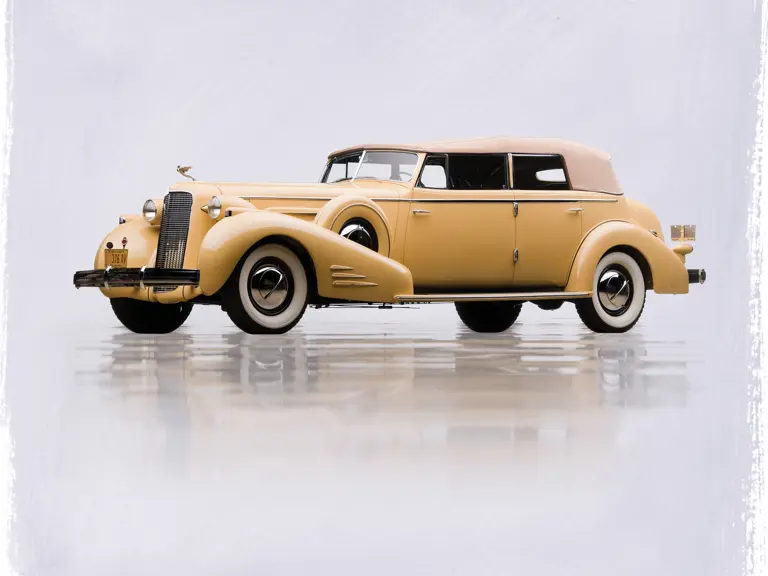
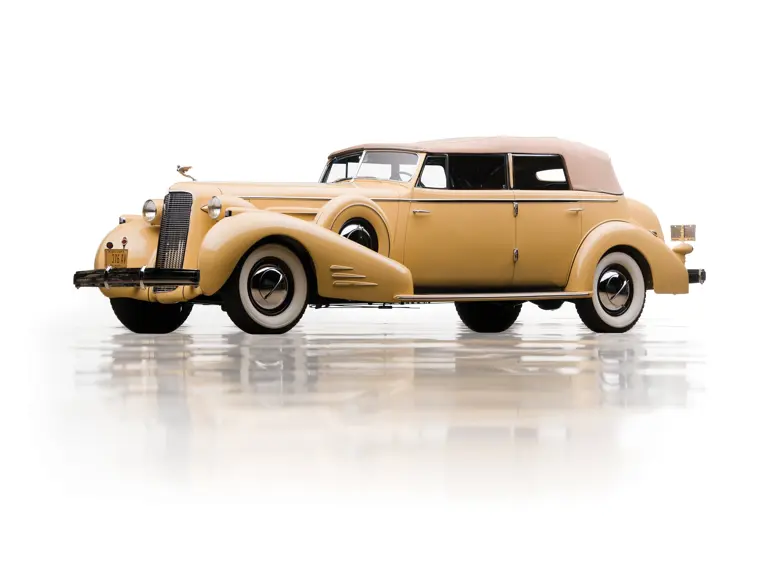
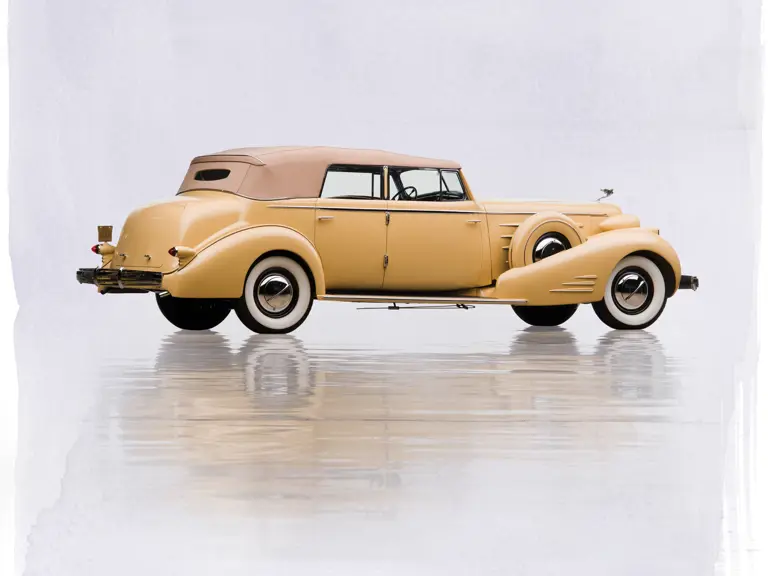
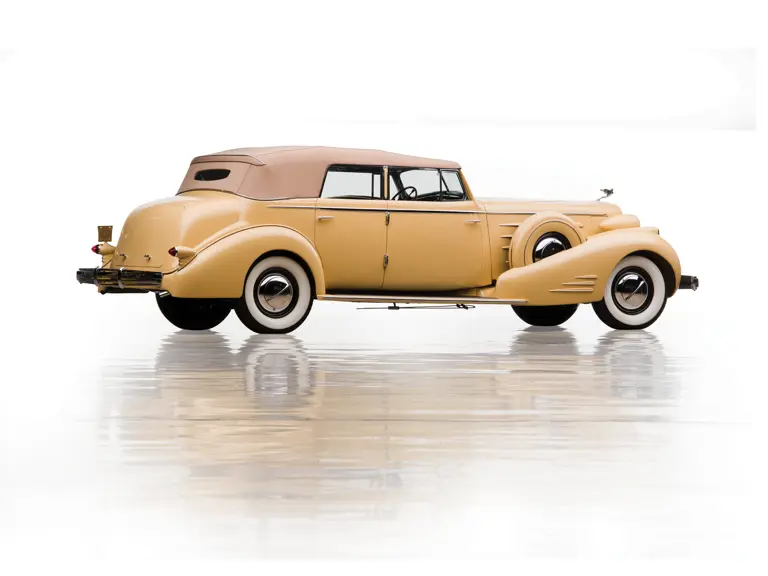

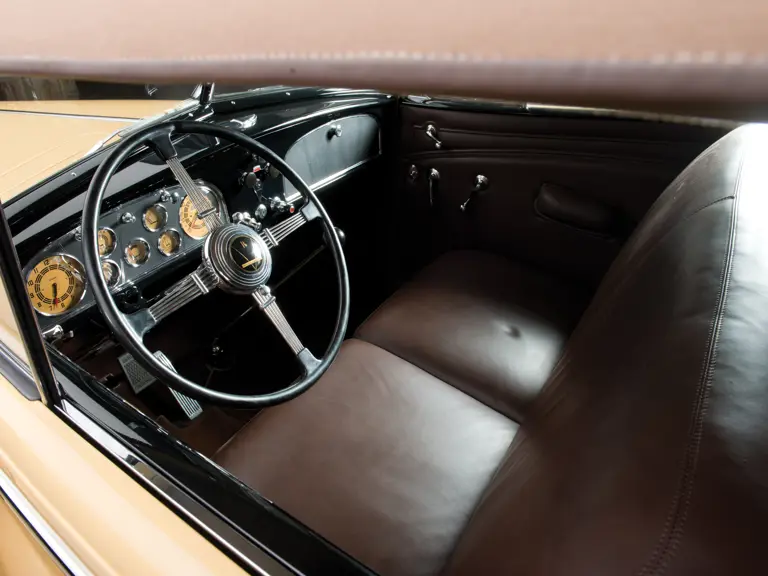

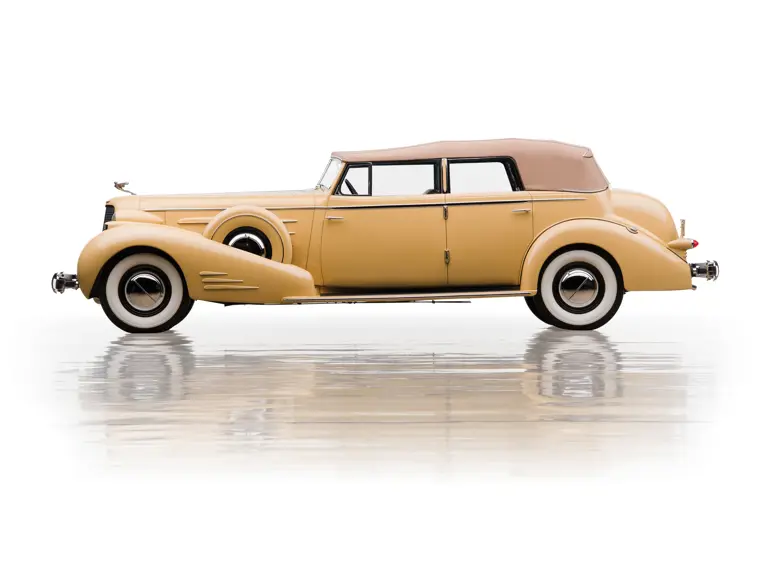
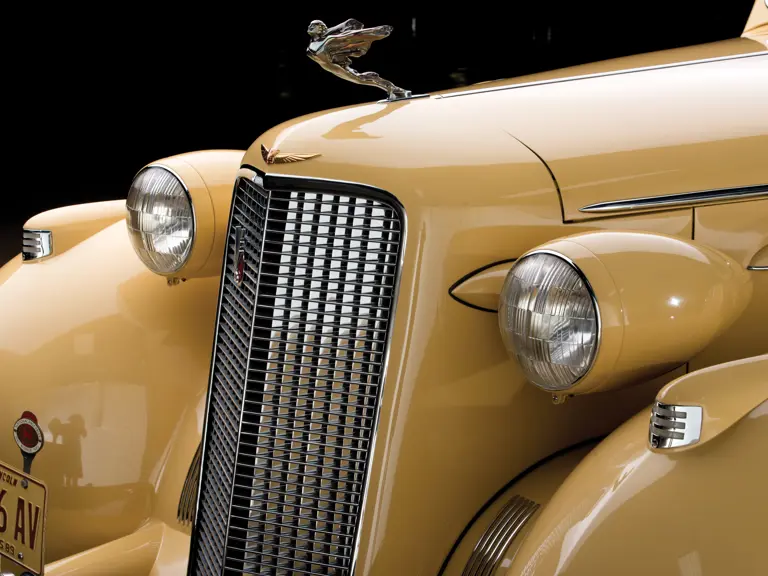
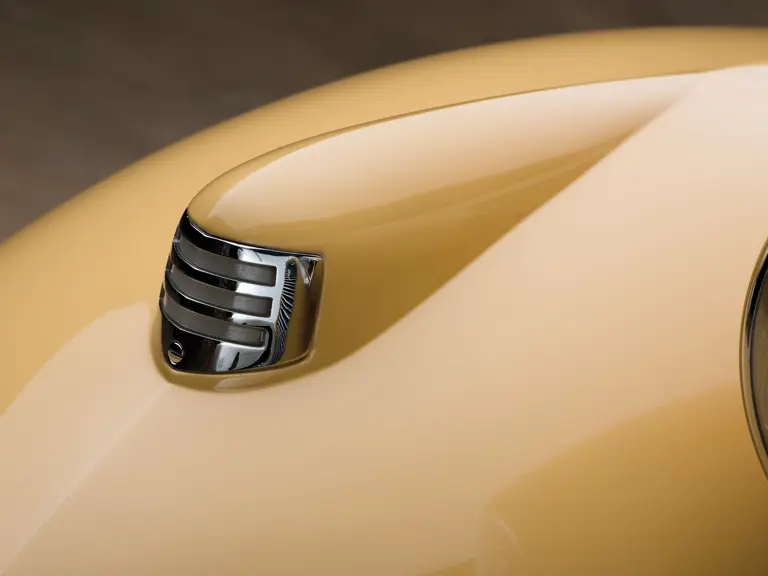
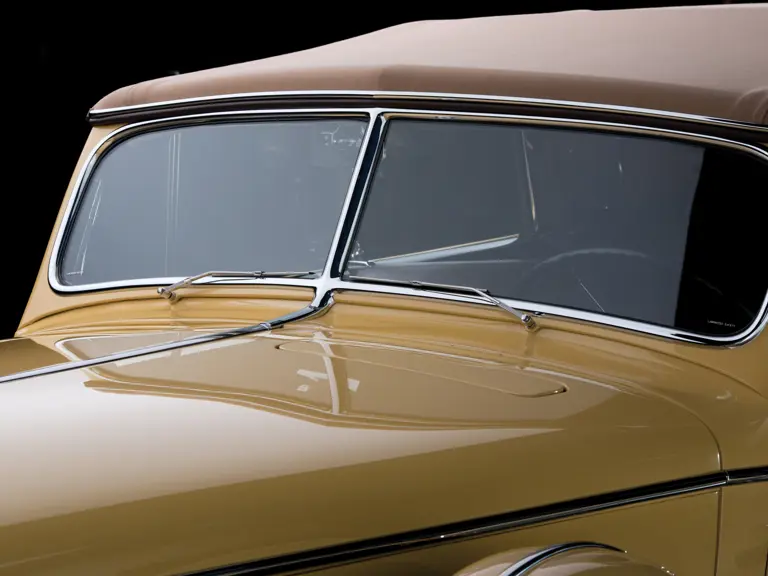
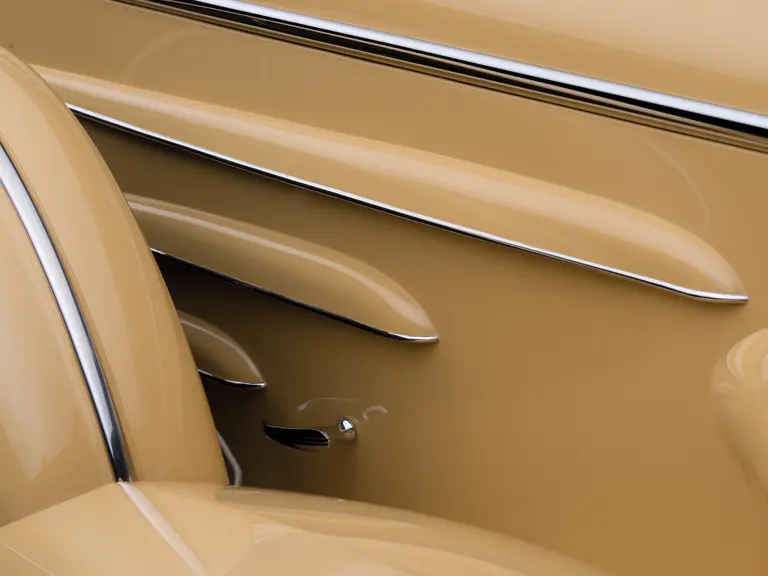
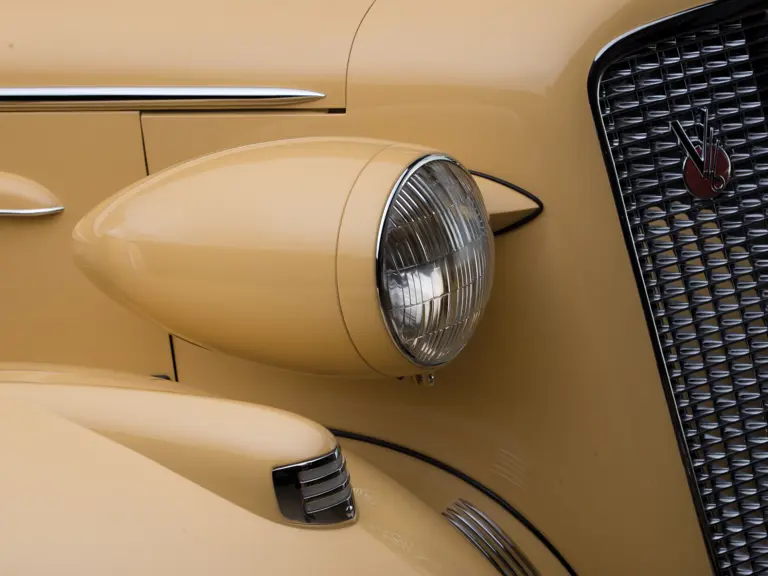

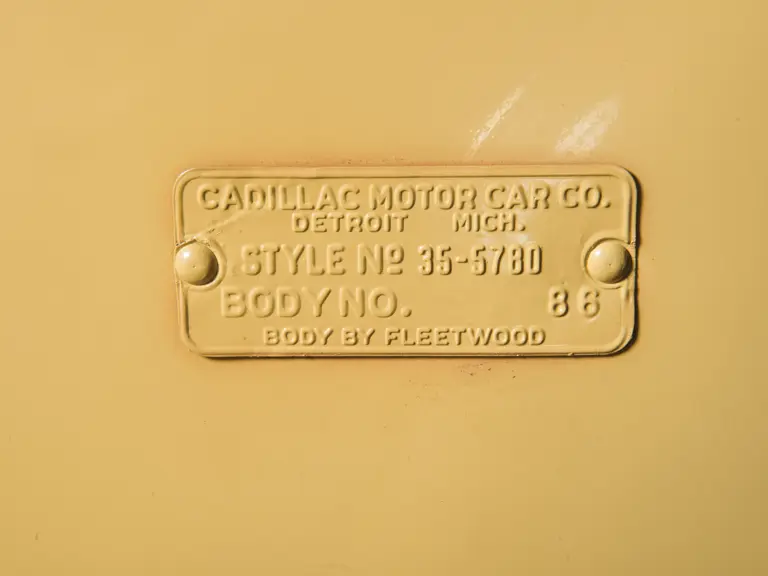
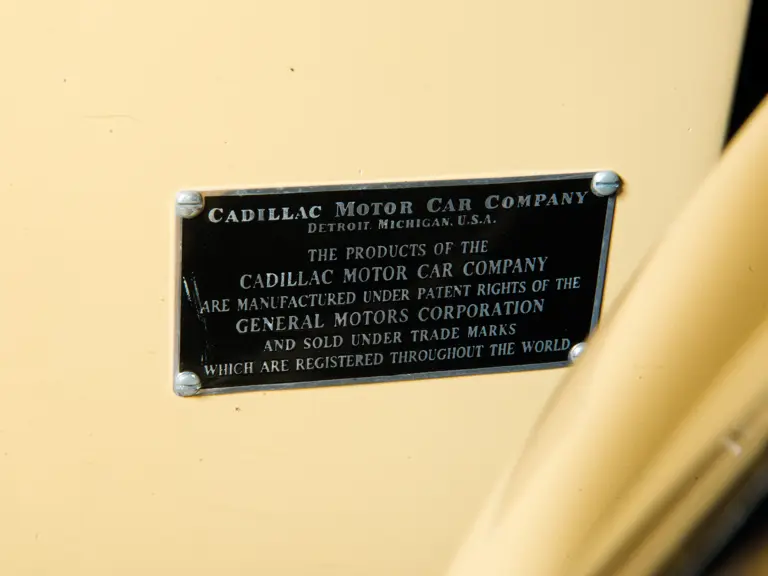
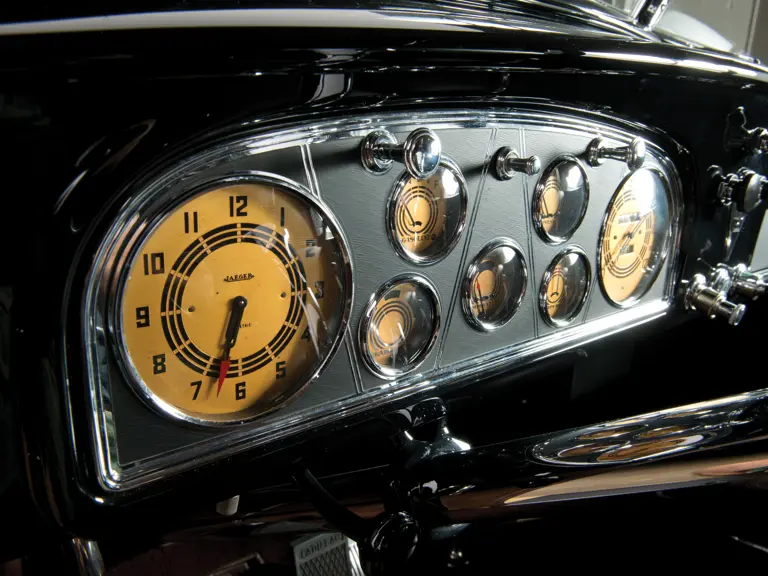
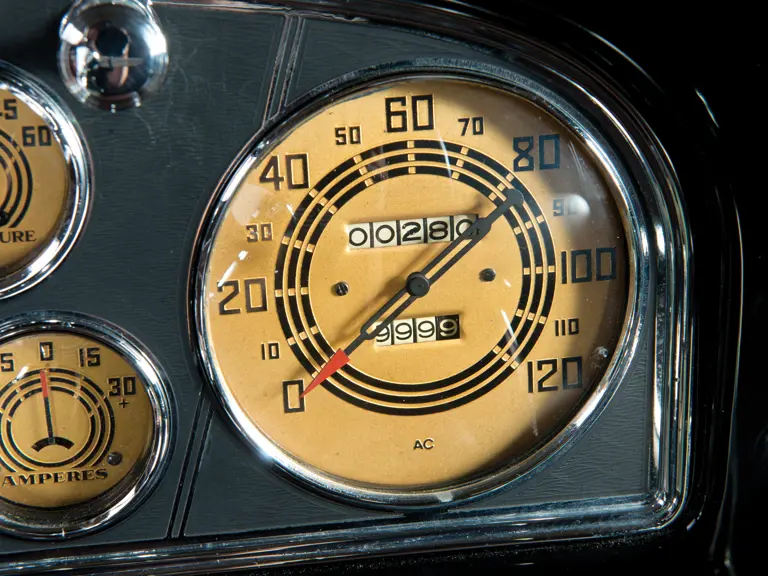
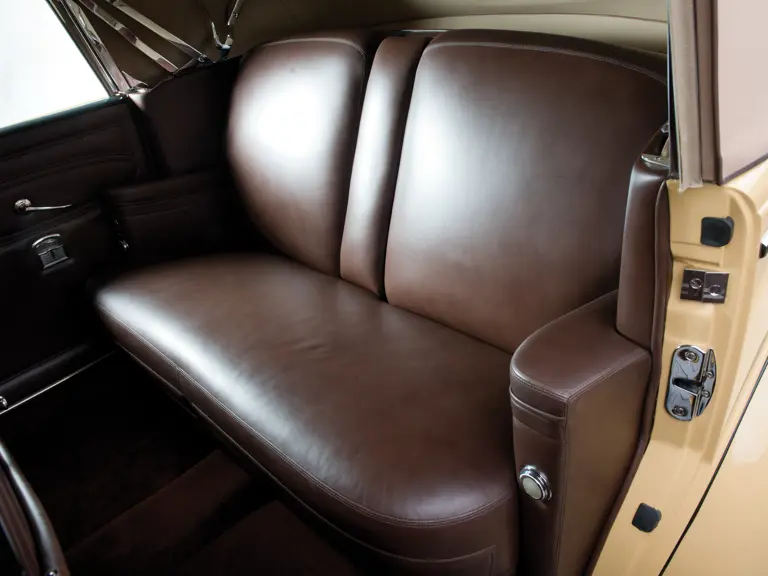
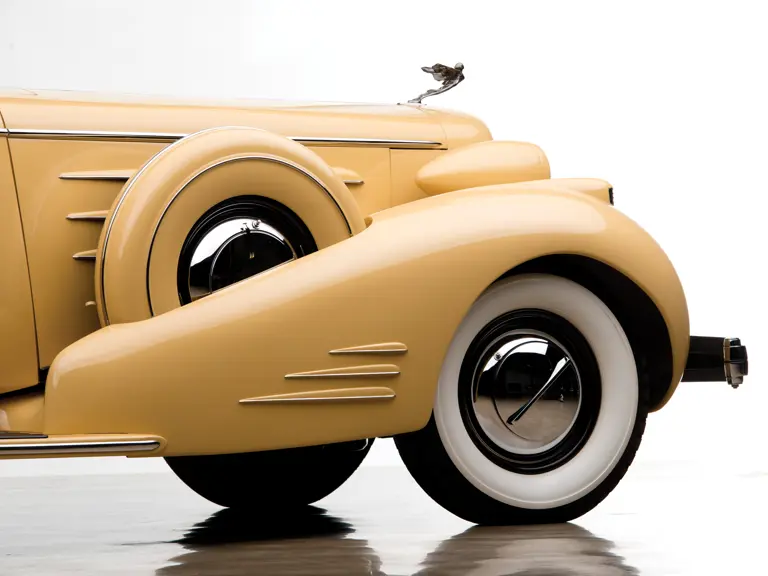
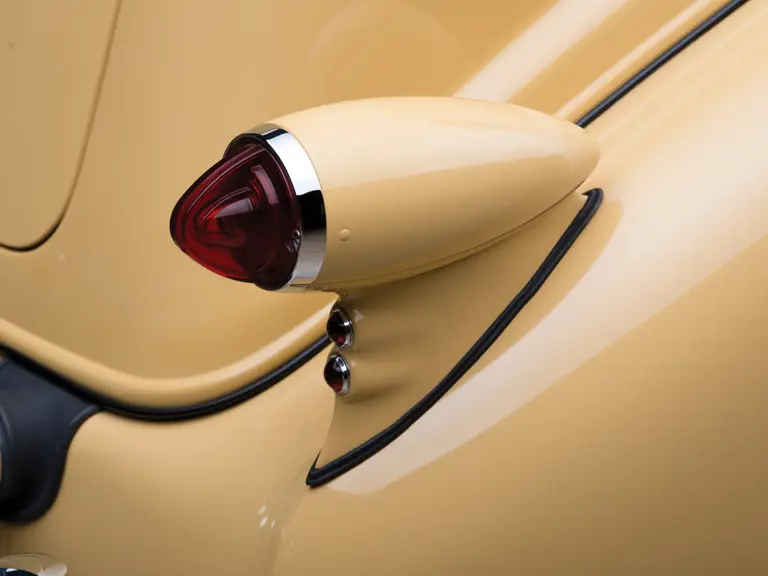

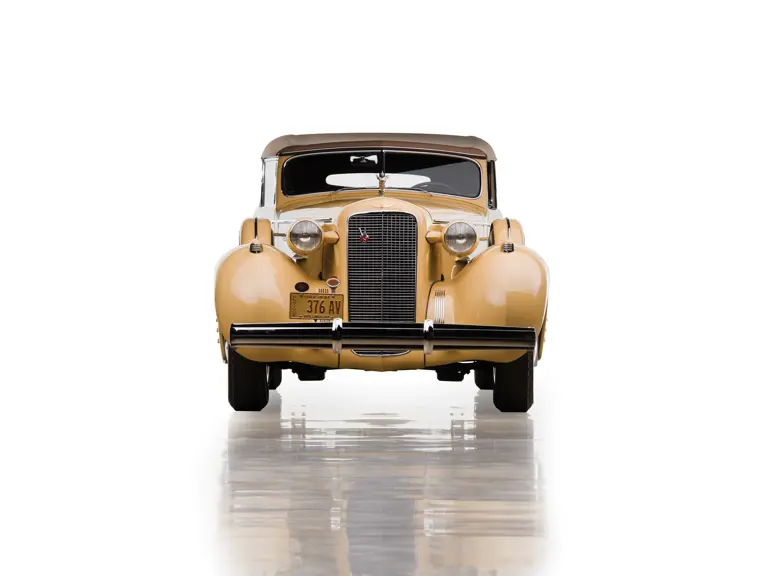
 | Fort Worth, Texas
| Fort Worth, Texas
